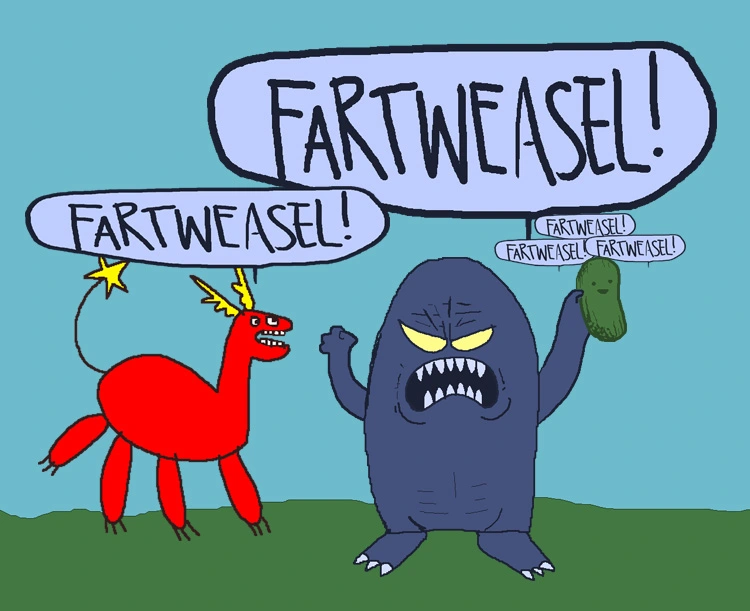When thousands of pages started disappearing from the Centers for Disease Control and Prevention (CDC) website late last week, public health researchers quickly moved to archive deleted public health data.
Soon, researchers discovered that the Internet Archive (IA) offers one of the most effective ways to both preserve online data and track changes on government websites. For decades, IA crawlers have collected snapshots of the public Internet, making it easier to compare current versions of websites to historic versions. And IA also allows users to upload digital materials to further expand the web archive. Both aspects of the archive immediately proved useful to researchers assessing how much data the public risked losing during a rapid purge following a pair of President Trump’s executive orders.
Part of a small group of researchers who managed to download the entire CDC website within days, virologist Angela Rasmussen helped create a public resource that combines CDC website information with deleted CDC datasets. Those datasets, many of which were previously in the public domain for years, were uploaded to IA by an anonymous user, “SheWhoExists,” on January 31. Moving forward, Rasmussen told Ars that IA will likely remain a go-to tool for researchers attempting to closely monitor for any unexpected changes in access to public data.
Rasmussen told Ars that the deletion of CDC datasets is “extremely alarming” and “not normal.” While some deleted pages have since been restored in altered versions, removing gender ideology from CDC guidance could put Americans at heightened risk. That’s another emerging problem that IA’s snapshots could help researchers and health professionals resolve.
On Bluesky, Rasmussen led one of many charges to compile archived links and download CDC data so that researchers can reference every available government study when advancing public health knowledge.
“These data are public and they are ours,” Rasmussen posted. “Deletion disobedience is one way to fight back.”
To help researchers quickly access the missing data, anyone can help the IA seed the datasets, the Reddit user said in another post providing seeding and mirroring instructions. Currently dozens are seeding it for a couple hundred peers.
“Thank you to everyone who requested this important data, and particularly to those who have offered to mirror it,” the Reddit user wrote.
As Rasmussen works with her group to make their archive more user-friendly, her plan is to help as many researchers as possible fight back against data deletion by continuing to reference deleted data in their research. She suggested that effort—doing science that ignores Trump’s executive orders—is perhaps a more powerful way to resist and defend public health data than joining in loud protests, which many researchers based in the US (and perhaps relying on federal funding) may not be able to afford to do.
“Just by doing things and standing up for science with your actions, rather than your words, you can really make, I think, a big difference,” Rasmussen said.
Don’t worry they are going to go after that too, I guarantee it
archive.is or their mirrors should also be used, as archive.org has proven vulnerable to takedown requests from corporations, wouldn’t surprise me if they could be coerced into removing their data by USA govt request as well.
It wouldn’t take much; they had multiple breaches and other problems last fall, seemingly due to very avoidable reasons.
very avoidable reasons.
They’re understaffed for the amount of work they do, and their staff are probably even more busy fighting lawsuits at the moment. Things are going to slip through the cracks, unfortunately.
deleted by creator
When the internet archive was attacked a few months ago we were like “who would be dumb and mean enough to do that?”. We have new suspects! 🎉
I literally posted a comment back then saying “sure is odd that this is happening right before the US election. Not saying it means anything, but maybe it’s not a coincidence?” and got downvoted to hell lmao.
Any idea the size of IA? Could it be packaged in some torrents and distributed to the masses for decentralized archiving? I’m guessing it’s way more than I could store.
As of five years ago, 70 petabytes: https://blog.adafruit.com/2020/12/01/donate-to-the-internet-archive-digital-library-of-free-borrowable-books-movies-music-wayback-machine-internetarchive/
in 2012 it was 10 petabytes. Now, it’s probably well over 100 petabytes. I think it well beyond the scope of torrents by now.
That’s a bit more than my home server can handle. I could maybe take some CDC data, but definitely not the full shebang. It would be neat if someone could segment the data so we could save some more critical things.
A couple years ago I read that Filecoin has teamed up with the internet archive to synchronize the data on the Blockchain. I’m not sure how far they are yet, but it’s something that could work if it doesn’t turn out to be just crypto hype in the end.
This comment from 8 months ago says 152PB: https://www.reddit.com/r/DataHoarder/comments/1cu79ke/the_archiveteam_has_a_cost_shameboard_of_the_top/l4om4m6/
Is there a way to distribute it so everyone just has parts of it? Aren’t there p2p cloud storage solutions that exist?
The problem is you’d need to split it down to an amount that people would be happy hosting and then host it multiple times in case any node goes offline.
Another comment in the thread says it’s likely over 100PB today (100,000 terabytes). I’d say 4 copies (spread over different time zones) is a relatively minimal level of redundancy (people may host on machines that aren’t powered all the time), and I reckon you’d get a network with the most participants, whilst still getting enough storage, at around the 150gb per node mark.
That comes to nearly 3 million participants needed just to cover today’s archive, new people will obviously need to join every day. Also given I imagine it would need to be open to all, the redundancy level could do with increasing to avoid malicious actors with a lot of resources taking on a lot of the network and forcing it all offline at once in an effort to cause data loss
Nothing here is insurmountable, but also not remotely easy
It doesn’t help that people put silly things onto the IA. I’ve seen some things like YouTube videos that really didn’t need to be there (they have, objectively, nothing of value enough to warrant taking up space on these servers that could be used for more important materials…).
If they added download options on different taxonomies, I’d try to grab some things to archive.
Yeah, stuff that is able to be taught is vital to have archives, but some Twitch streamer playing some MMO/shooter/scary game isn’t what I would consider very imperative to get backed up. :P
Here’s how to help them: https://github.com/ArchiveTeam/warrior-dockerfile
Oh, cool, didn’t know about this, throwing it on my home lab now.
That’s not the Internet Archive; that’s a separate group (ArchiveTeam). They use the Internet Archive for storage but are otherwise completely unrelated.
The data archived by Archive Team Warrior does not go into the Wayback Machine(edit: sounds like this is no longer true)Their data is 2.8% of the data in the Internet Archive: https://www.reddit.com/r/DataHoarder/comments/1cu79ke/the_archiveteam_has_a_cost_shameboard_of_the_top/l4om4m6/
As I understand it, their data does in fact enter into the Wayback Machine. They are just also available in the direct WARC archive files(which IMO sounds beneficial to the idea of exporting in bulk to another backup host). At least that’s how their FAQ reads.
And given that they focus on web crawling, and not other arbitrary data formats that IA accepts, 2.8% of over 100 petabytes is still a respectable amount of data.
That said, help is help. If another archival project team wants me to run a worker node so they can distribute load and dodge crawler blocks, let me know, I’ve got space.
As I understand it, their data does in fact enter into the Wayback Machine
Thanks for the info! It never used to, so I guess that changed at some point.
It does go into the WaybackMachine AFAIK.
These guys seem cool but they’re not the archive.org from the op article
It’s a team of volunteers who help scrape and upload things to archive.org.
Need an archive of the archive









